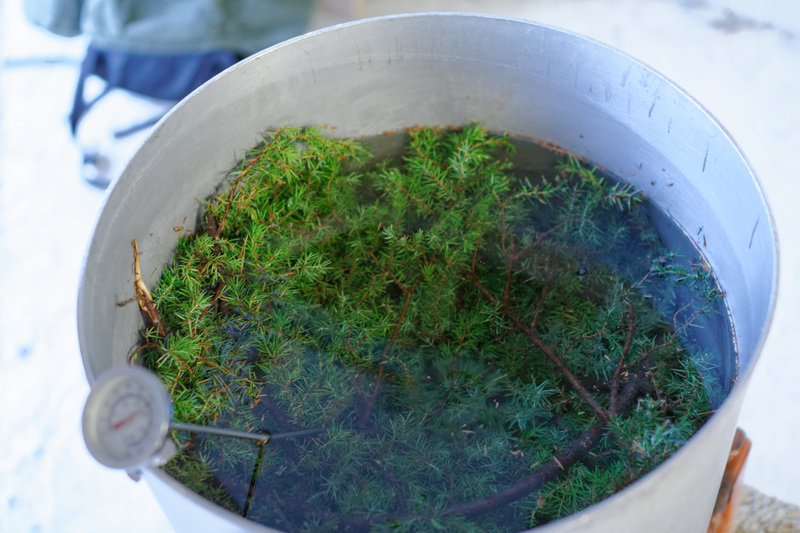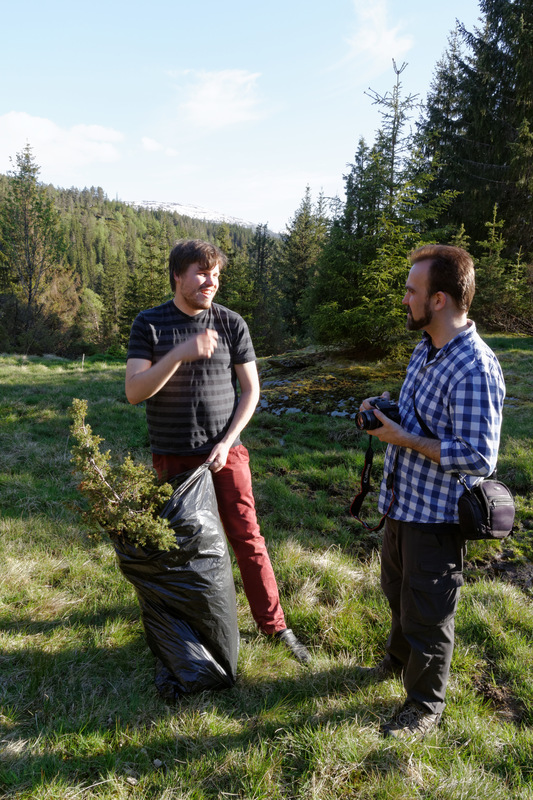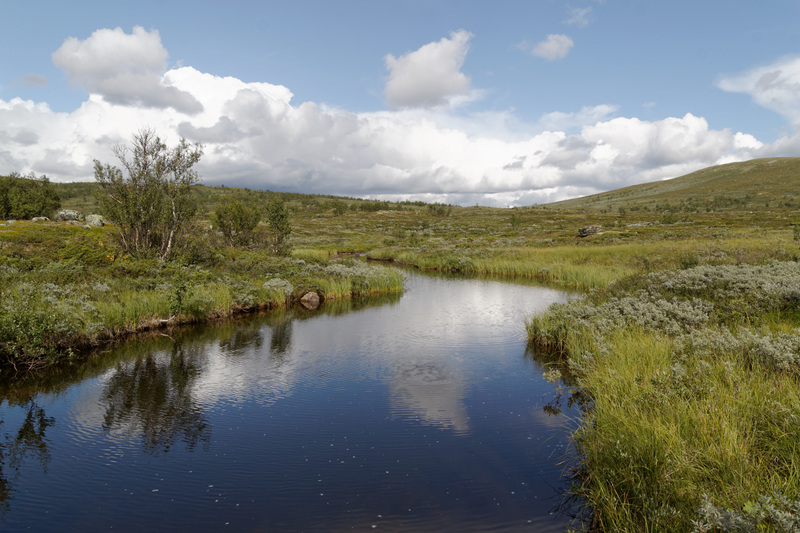Process or ingredients?

Making juniper infusion, Rælingen, Norway |
Recently there have been a whole range of initiatives in Norway to develop beers that are more truly Norwegian. One is the Scandinavian project for New Nordic Beer, but there are also a few research projects run by Bioforsk, Østforsk, etc. Common for all of these is a focus on finding local ingredients, in part by exploring the local farmhouse brewing traditions. I think this is not the most interesting approach.
Digging through the various sources on local brewing you find an endless list of ingredients that are reputed to have been used. The responses to the farmhouse brewing survey lists quite a lot of ingredients that the respondents say they have heard of people using. Similarly, old books on botany or geography all throw up lots and lots of herbs that supposedly have been used in beer brewing. Odd Nordland's book goes through a lot of this, and it's clear that there's much more to be found.
There are two problems with this. The first is that if you look at what people say they themselves have used, you're very quickly down to the following ingredients: water, hops, barley, yeast, and juniper. If you look at what the farmhouse brewers use today, the list is exactly the same. I don't doubt that many of the ingredients listed in the various sources have been used, but from the available evidence that seems to have been rare.

Mountain pasture, Espedalen, Norway |
The second problem is that there are no recipes involving these ingredients. We have no idea how much was used, how, or in combination with what other ingredients. Is this particular herb best in strong or weak beers? Dark or pale? Boiled or raw ales? So far I have yet to see a single clue to any of these questions. Which means that you might as well just ignore the old sources and simply start trying ingredients out from scratch.
In which case: where is the inherent Norwegianness?
However, what really makes me skeptical is that in my travels, I've found that you can make totally unique beers with very little in the way of special ingredients. And these unique beers have a history going back at least a millennium during which they have evolved to suit the available ingredients, local drinkers and cuisine. That is a lot more Norwegian, for one thing, and far harder to copy well. It's also much more important. There's a reason why coriander beer or elderflower beer isn't a thing, but Belgian wit and porter are very big things indeed.

Collecting juniper, Voss, Norway |
There have been a number of Norwegian craft juniper beers already, which is the logical thing to brew if you want to make a Norwegian beer based on "Norwegian" ingredients. (I write it in quotes, because juniper grows over much of the northern hemisphere, and is used in Finland and Sweden, too.) The ones I've tried so far have not really worked very well. Typically, the bitterness has been too harsh, and the juniper flavour has not been well integrated with the other flavours.
The Norwegian maltøl, on the other hand, use juniper without being juniper beers, and there the integration problem is solved already. I've helped brew two beers with juniper now, which both were considered by both me and other experienced tasters to be very good, and in both part of what made them work was the balance of malt sweetness with juniper bitterness. All it took was replicating what Norwegian farmhouse brewers are doing already.
So to put it another way, process and ingredients go together, and ingredients on their own are not really that interesting. You need to put them together to get something good, and also to get something truly local.
Unfortunately, studying the process is much harder than finding lists of possible ingredients. Complete recipes in the older written sources are very hard indeed to come by. For Norway I so far have one from Hardanger in 1896, a few in the survey responses, and some more dubious ones from cookbooks and similar. Plus, possibly, one from 1767, but that one will take some real work to get hold of. In modern sources there are by now a good number of real recipes, so that part is easier, but to see what farmhouse brewers are doing today you have to find private people doing this at home. It's not exactly easy, but in my opinion it's the way to go.
Another issue is the one of which ingredients one should look at. I'll come back to that one.

Mountain stream, Espedalen, Norway |
Similar posts
Herbs in Norwegian farmhouse ale
If you look at books on herbs, and even quite a few books on traditional brewing, it seems like just about every herb known to man has at one time been used in brewing
Read | 2015-04-13 12:25
Norwegian farmhouse ale
It's a well-kept secret that in Norway there exists a homebrewing tradition completely separate from the modern homebrewing that's taken off in the last few decades
Read | 2013-10-27 13:24
Truly local beer requires a beer culture
I expressed concern that beers are becoming more similar all over the world, even though there people who are trying to develop genuinely local beers, by exploring local ingredients and practices
Read | 2014-12-02 20:58
Comments
No comments.